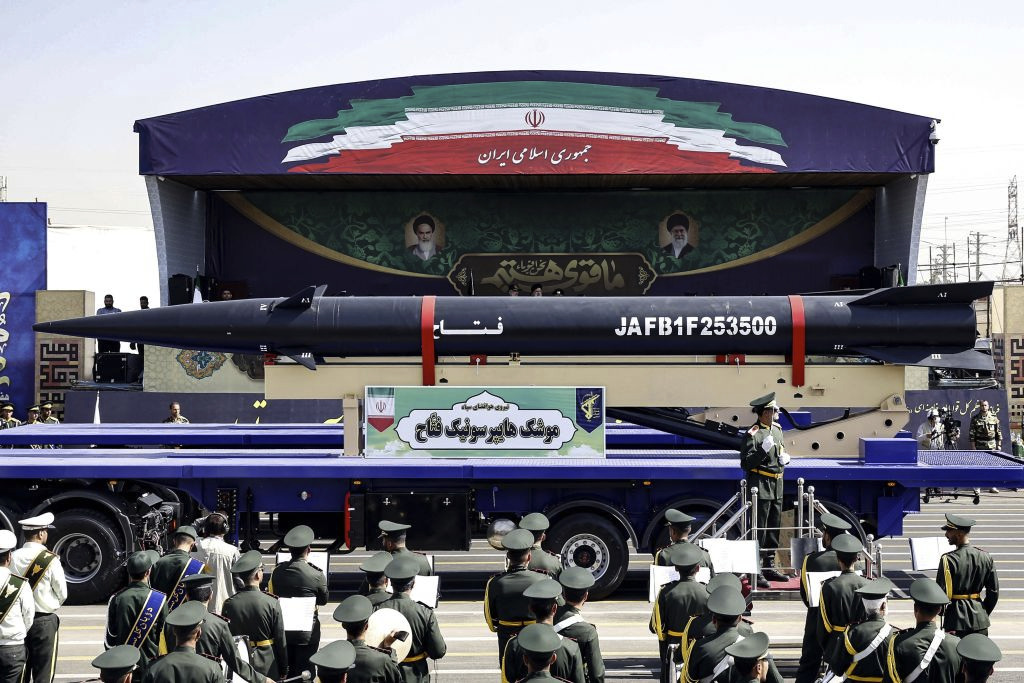Almost Heaven
Well-known
Little attention is being paid to Iran in the aftermath of the 12‑Day War, but the threat it now poses is growing significantly. While global focus has shifted to other crises, Iran has rapidly and aggressively been accelerating its ballistic missile production at the speed of light. The Iranian regime is proudly announcing its manufacture of vast quantities of missiles, expanding assembly lines, and is openly boasting about its growing arsenal. Iran is not concealing these developments; it is bragging about them. The regime, despite a crippling drought, appears to feel emboldened, empowered, and determined.
"Iran's missile power today far surpasses that of the 12‑Day War," Iranian Foreign Minister Abbas Araghchi recently declared. His remarks were reinforced by Defense Minister Brig. Gen. Aziz Nasirzadeh, who claimed that the defense industry has not only recovered from wartime strain but has grown dramatically. "Iran's defense production has improved both in quantity and quality compared to before the 12‑day Israeli-imposed war in June," he stated, insisting that new missiles are now rolling off production lines faster than ever. The government seems to believe it has momentum—and appears eager to show it.
Some politicians and analysts may dismiss these proclamations as Iran just wishing to intimidate adversaries, prevent attacks and maintain regional influence. The reality, however, is that Iran's missile production is most likely meant to wage war again, either directly or through its proxies. The regime has a documented record of firing its missiles at U.S. military bases, at targets in Iraq, at striking Israel, and launching missiles into Qatar. Iran has also provided ballistic missiles to militant groups such as the Houthis in Yemen and has also been supplying missile and drone technology to Russia for use against Ukraine. Iran's proxies have launched missiles at civilian airports, commercial vessels, cities, and infrastructure across the region. Anyone who interprets this build‑up as "defensive" is ignoring decades of evidence to the contrary.
Iran is additionally boasting that its missiles can hit U.S. cities, European capitals, and targets throughout the Middle East. Iranian officials continue to emphasize their desire to wipe out Israel. Iran seems to view missile development as the backbone of its strategy to compensate for conventional military weaknesses. What if Iran should load just one of these missiles with a nuclear warhead? The window to constrain Iran's capabilities may be rapidly closing. The US should have let Israel keep on going when it wanted to, after the Trump administration took out three of Iran's nuclear plants: Israeli Prime Minister Benjamin Netanyahu knows what he is doing.
The West would be wise to put a credible military option back on the table: let Iran know that continued missile expansion, threats, and proliferation will again provoke a direct and forceful response. This would entail strategically identifying and facilities involved in the development, assembly, testing, and distribution of ballistic missiles.

 www.gatestoneinstitute.org
www.gatestoneinstitute.org
"Iran's missile power today far surpasses that of the 12‑Day War," Iranian Foreign Minister Abbas Araghchi recently declared. His remarks were reinforced by Defense Minister Brig. Gen. Aziz Nasirzadeh, who claimed that the defense industry has not only recovered from wartime strain but has grown dramatically. "Iran's defense production has improved both in quantity and quality compared to before the 12‑day Israeli-imposed war in June," he stated, insisting that new missiles are now rolling off production lines faster than ever. The government seems to believe it has momentum—and appears eager to show it.
Some politicians and analysts may dismiss these proclamations as Iran just wishing to intimidate adversaries, prevent attacks and maintain regional influence. The reality, however, is that Iran's missile production is most likely meant to wage war again, either directly or through its proxies. The regime has a documented record of firing its missiles at U.S. military bases, at targets in Iraq, at striking Israel, and launching missiles into Qatar. Iran has also provided ballistic missiles to militant groups such as the Houthis in Yemen and has also been supplying missile and drone technology to Russia for use against Ukraine. Iran's proxies have launched missiles at civilian airports, commercial vessels, cities, and infrastructure across the region. Anyone who interprets this build‑up as "defensive" is ignoring decades of evidence to the contrary.
Iran is additionally boasting that its missiles can hit U.S. cities, European capitals, and targets throughout the Middle East. Iranian officials continue to emphasize their desire to wipe out Israel. Iran seems to view missile development as the backbone of its strategy to compensate for conventional military weaknesses. What if Iran should load just one of these missiles with a nuclear warhead? The window to constrain Iran's capabilities may be rapidly closing. The US should have let Israel keep on going when it wanted to, after the Trump administration took out three of Iran's nuclear plants: Israeli Prime Minister Benjamin Netanyahu knows what he is doing.
The West would be wise to put a credible military option back on the table: let Iran know that continued missile expansion, threats, and proliferation will again provoke a direct and forceful response. This would entail strategically identifying and facilities involved in the development, assembly, testing, and distribution of ballistic missiles.

Iran Is Building a Missile Empire, the World Looks Away
While global focus has shifted to other crises, Iran has rapidly and aggressively been accelerating its ballistic missile production at the speed of light. If the West is serious about stopping Iran's missile expansion, dismantling these missile networks

